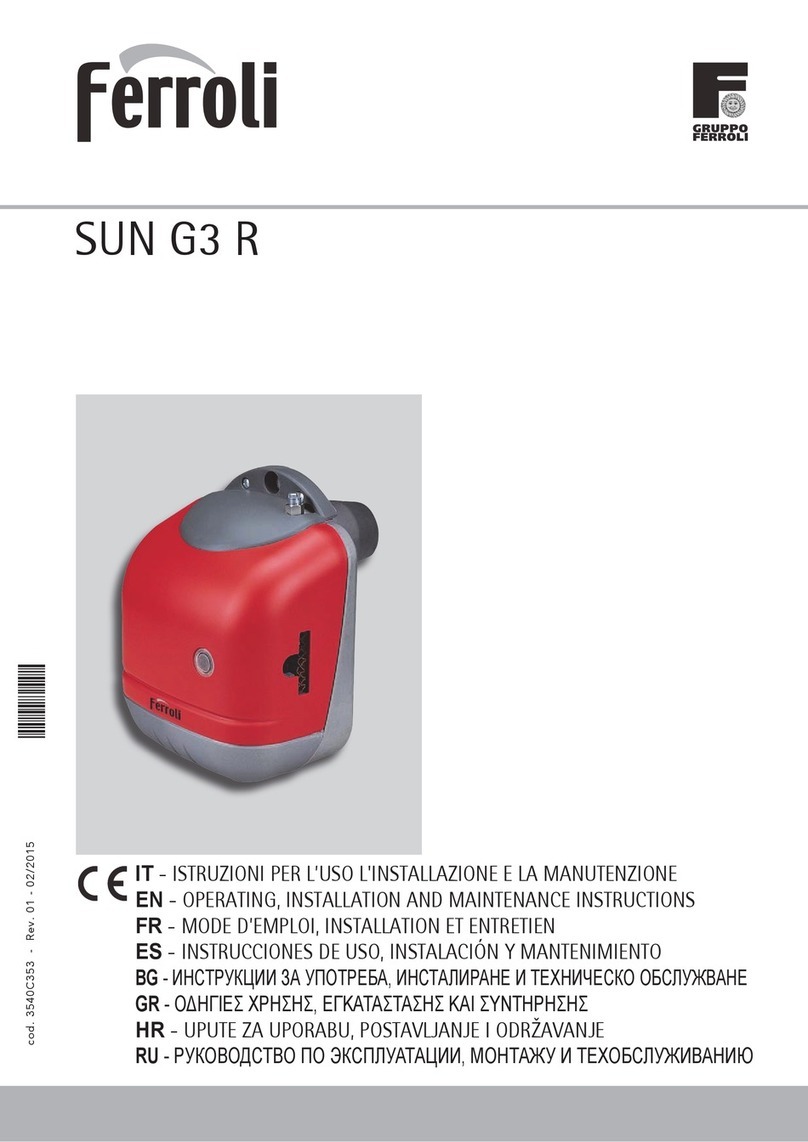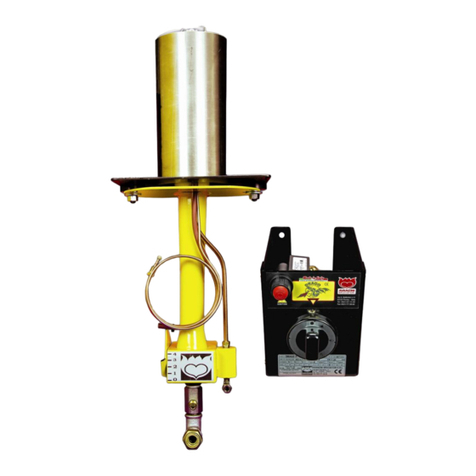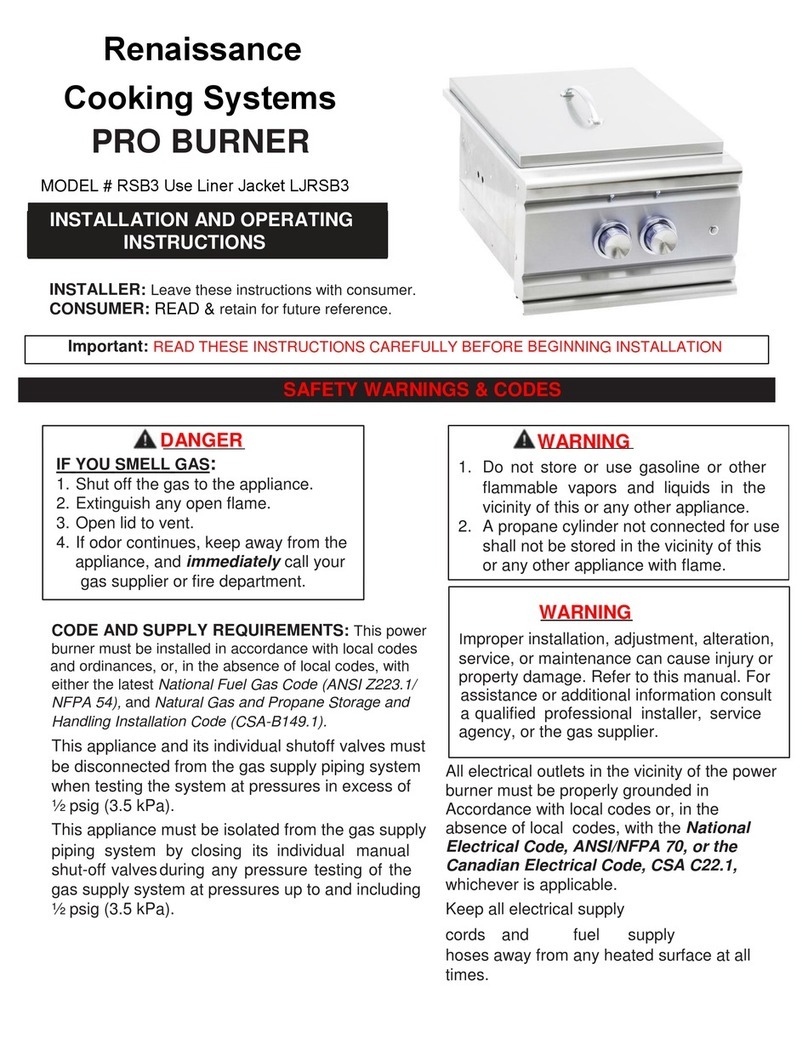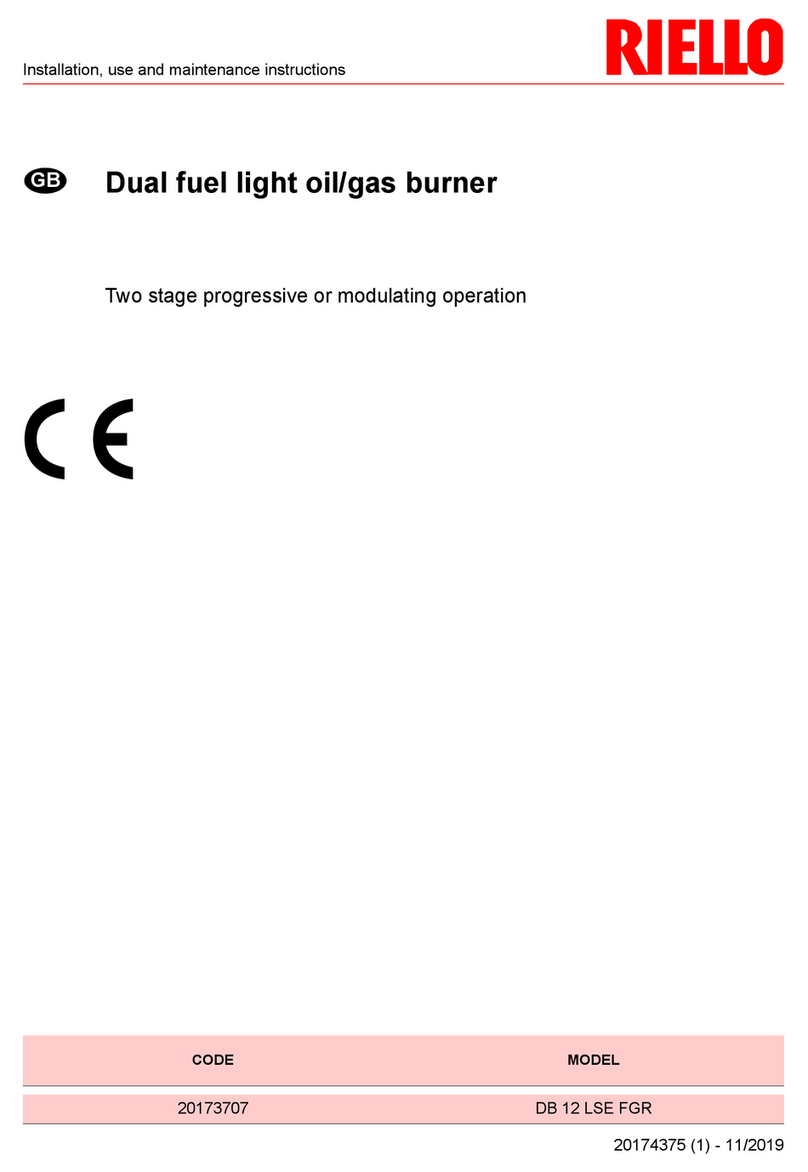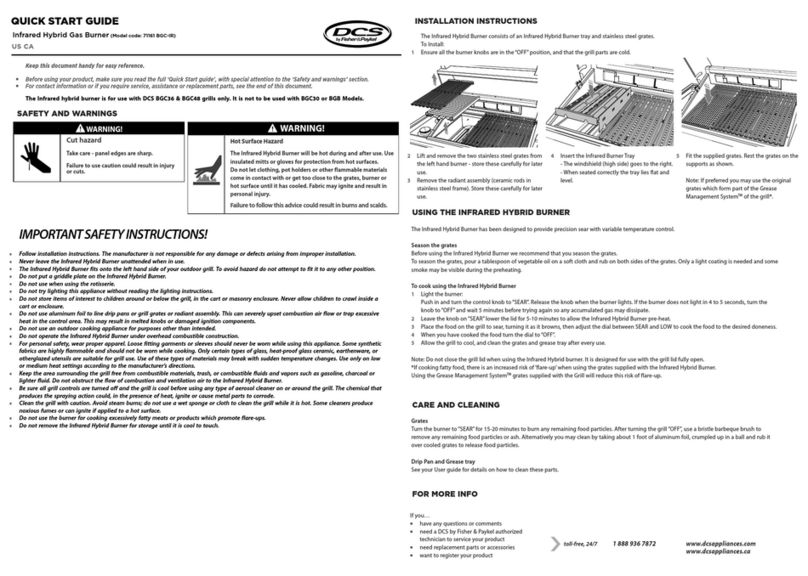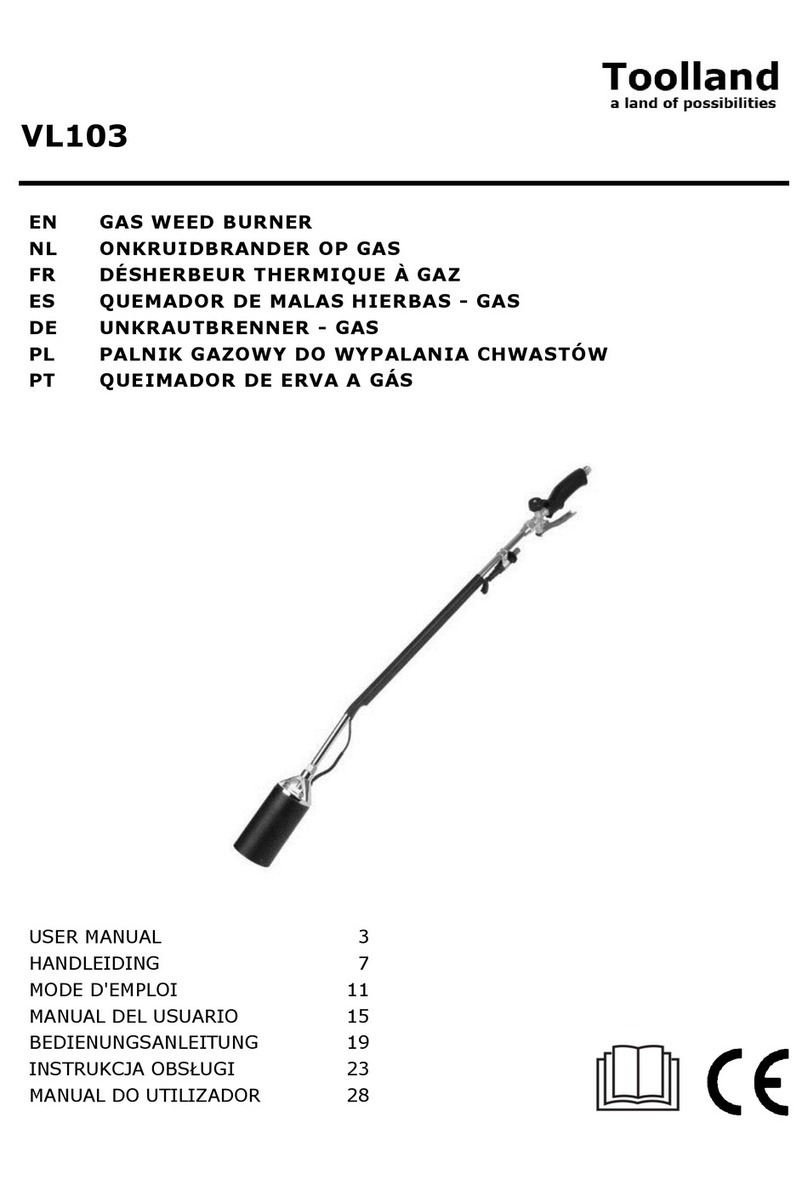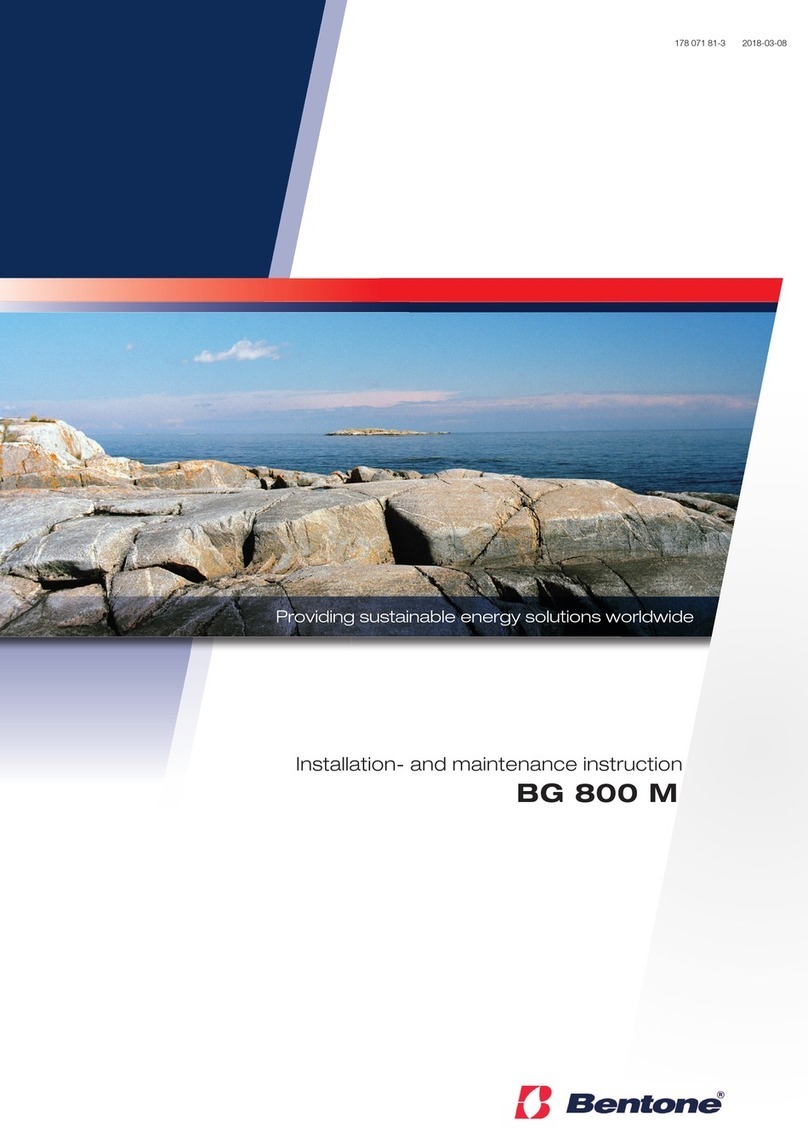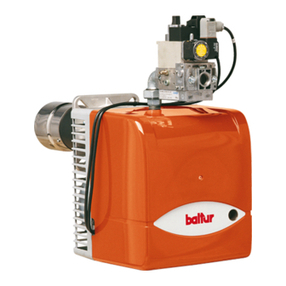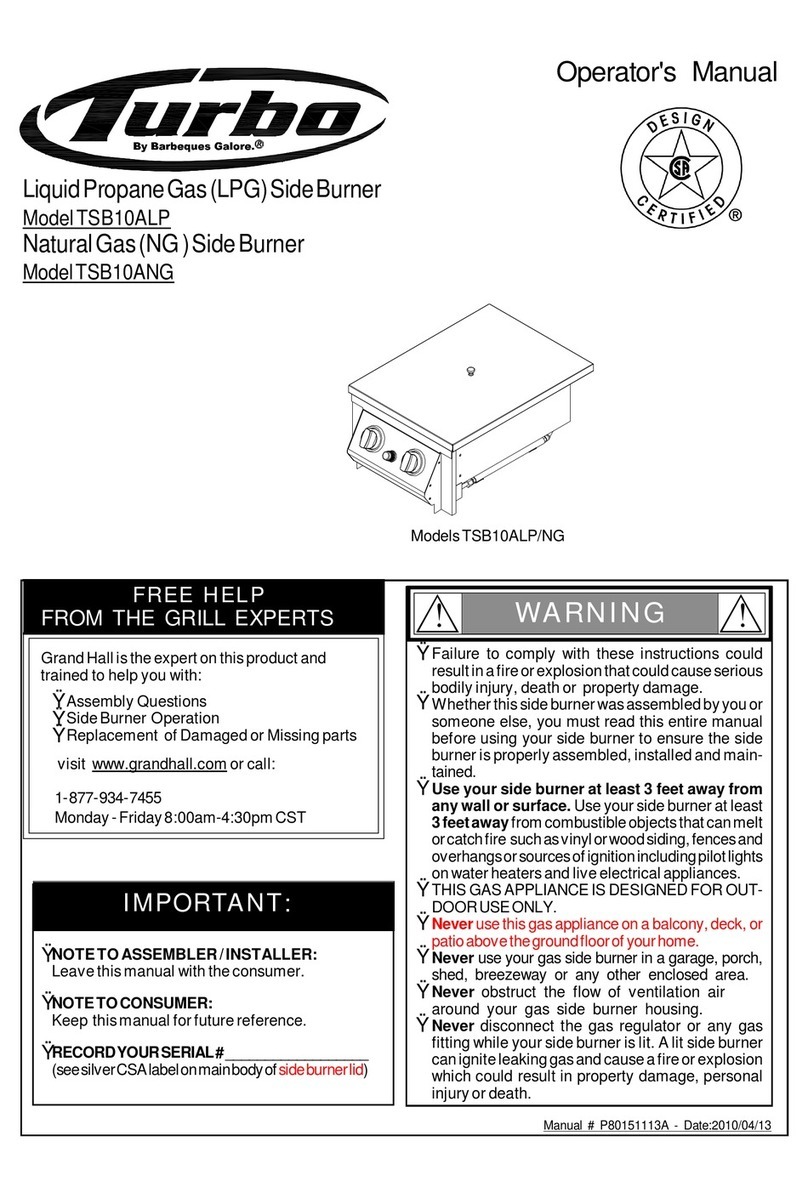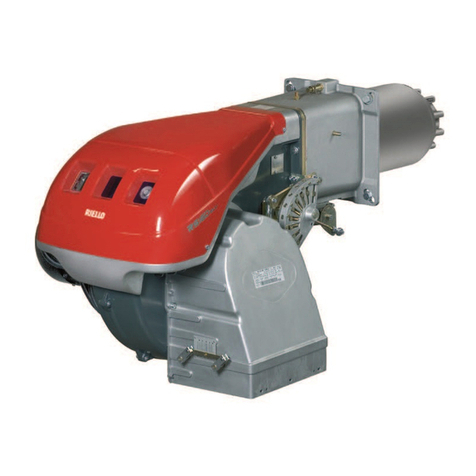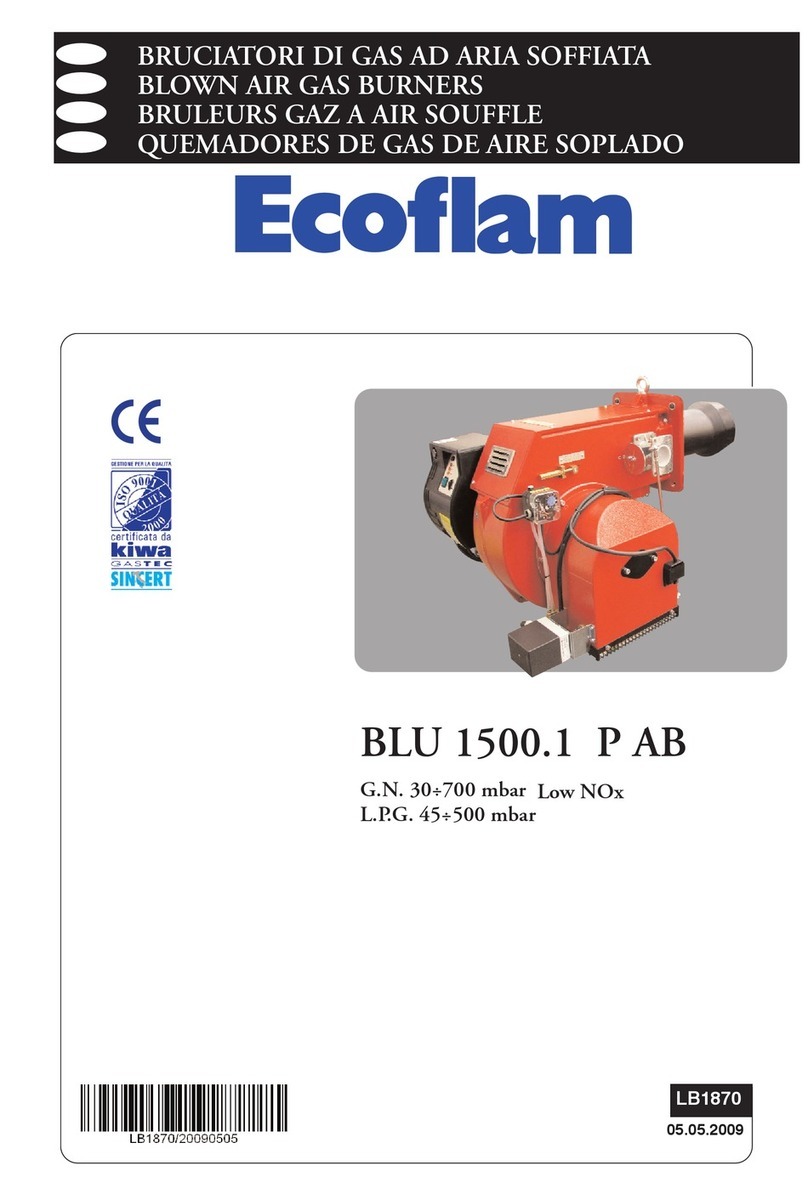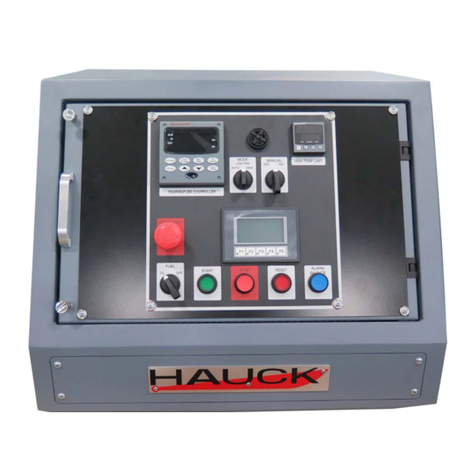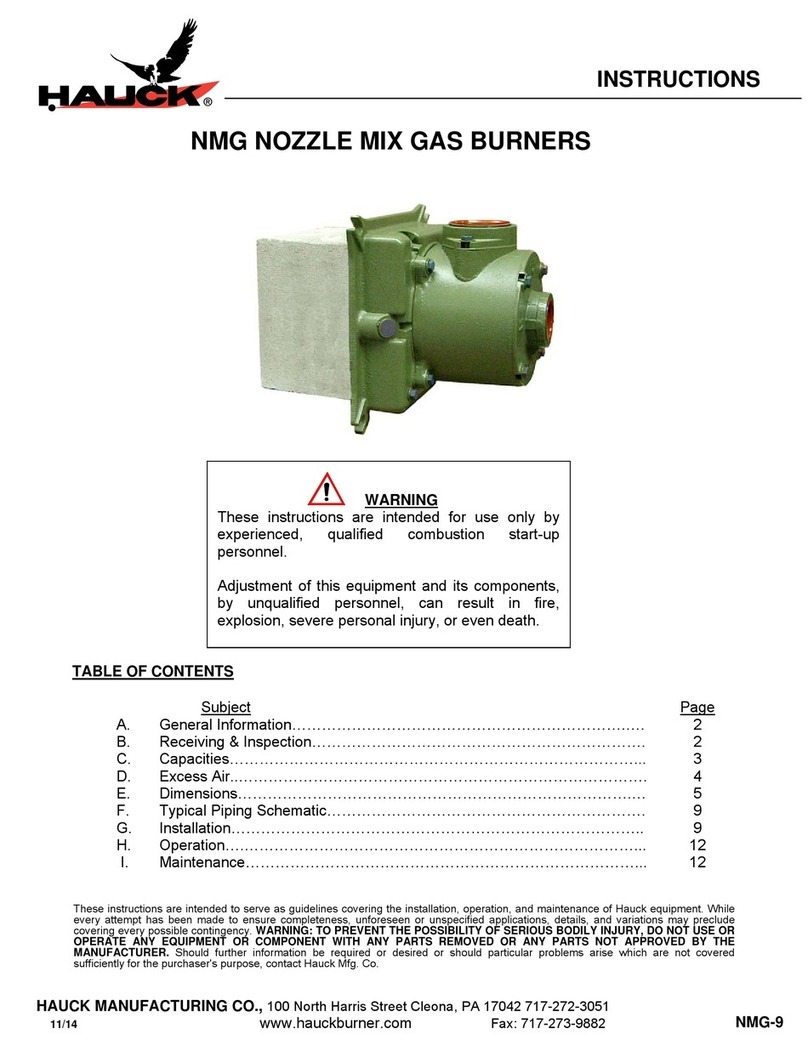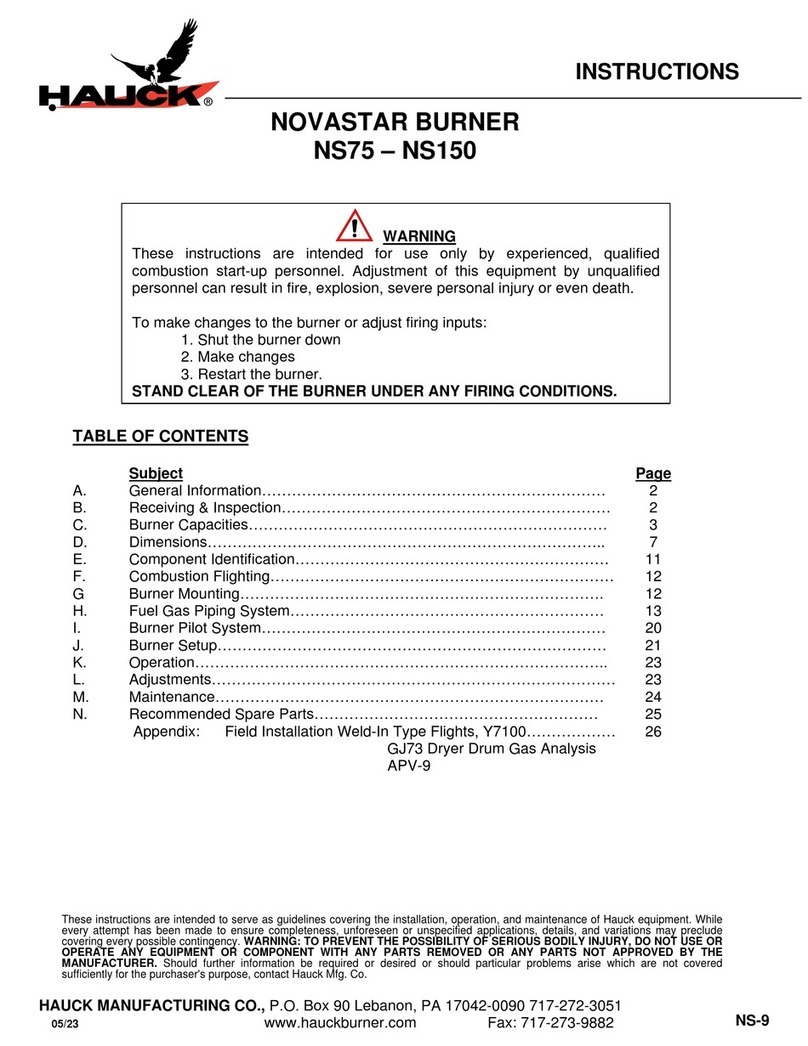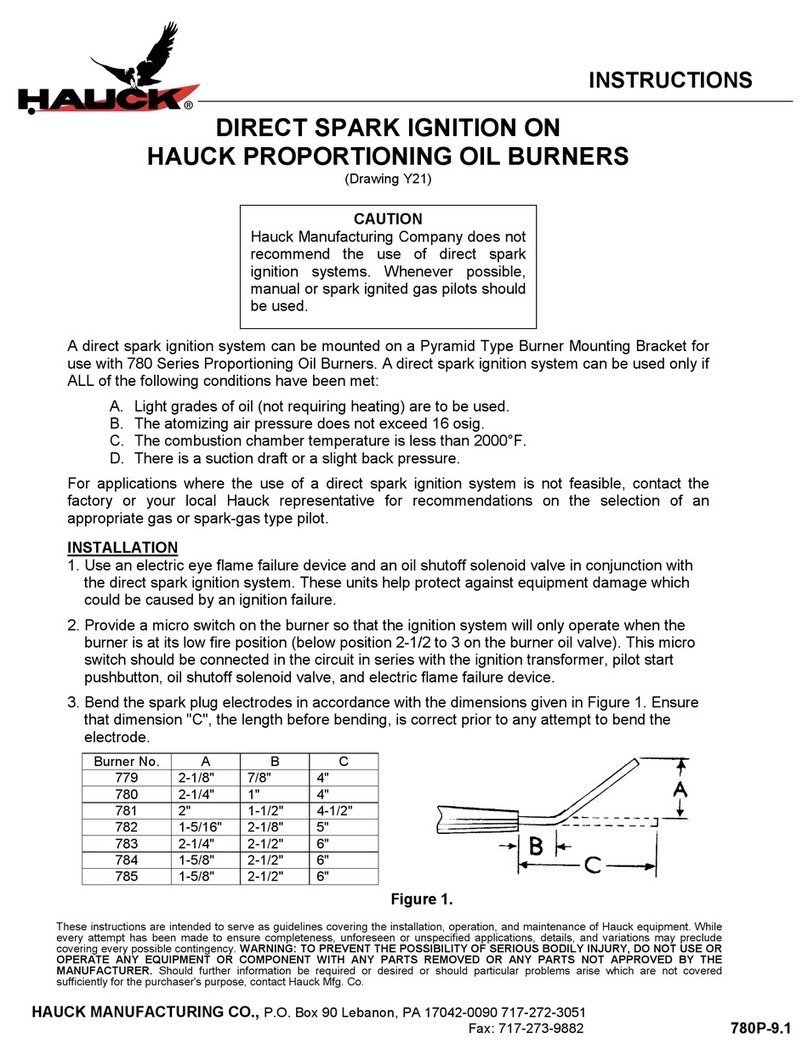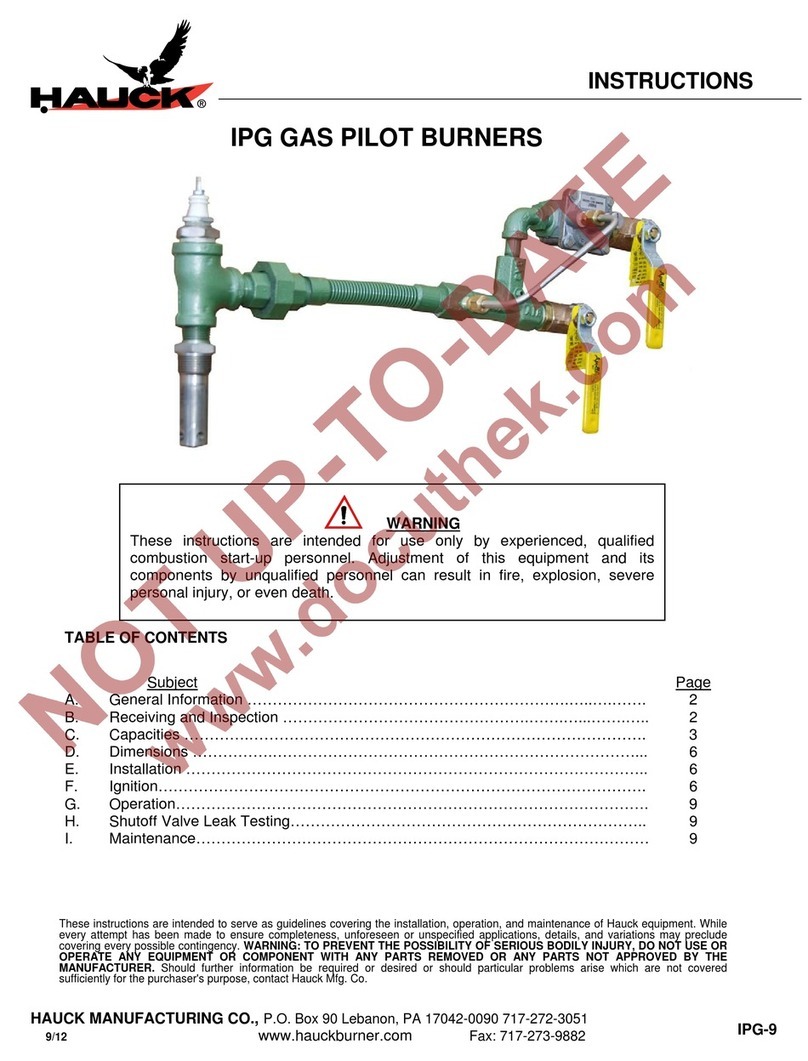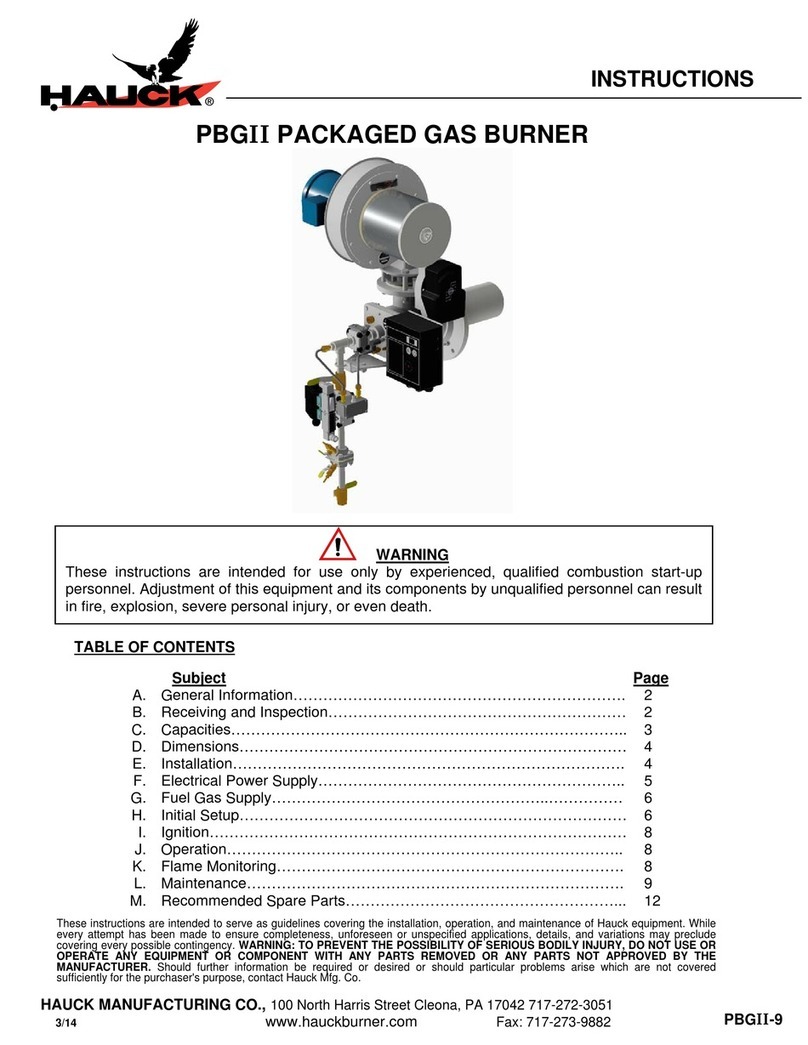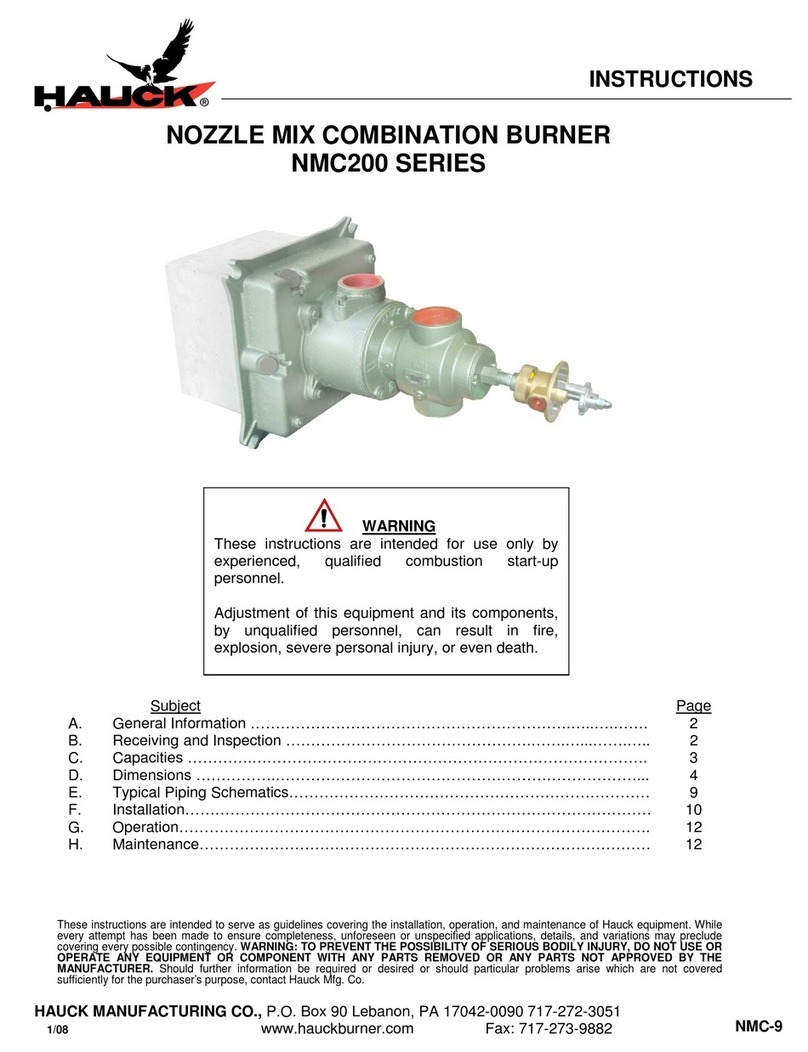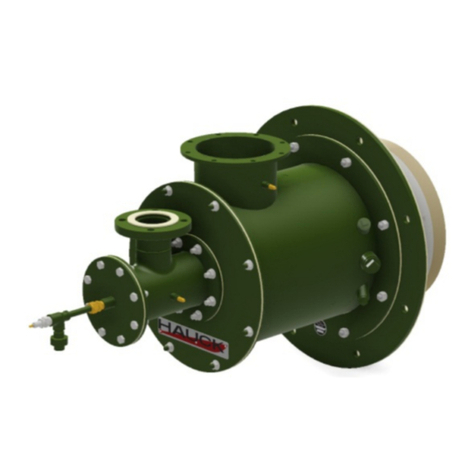
Page 8
MS-9
3. The burner can be ordered with a split-mounting companion flange that can be bolted onto
the dryer breech plate (see Table 4). This allows positioning the burner at various insertion
depths past the breech plate. Typical burner insertion depth is 18 to 24" (460 to 610mm).
Cut out a hole in the breech plate 2" (50mm) in diameter larger than the burner tube. Do not
weld the split-mounting flange to the burner body, as the breech will expand and contract
with changes in temperature. If the split-mounting flange is welded to the burner, heat and
stress will damage the burner. Tightly seal the burner to the breech. If using oil as a primary
fuel, the insertion depth may have to extend more than 24" (610mm) due to the amount of
radiant heat from an oil flame depending on the application.
MegaStarTM Model No. 50 75-100 125-150
Companion Flange Part No. 407091 56548x001 56549x008
Table 4. MegaStarTM Burner Recommended Split-Mounting Companion Flange
4. Bolt the burner to the support structure.
5. Wire the main fan motor and the optional TBA blower motor (if applicable) per instructions
on the motor.
6. Rotation of all blowers must be checked prior to burner startup. The rotation is marked with
an arrow on the blower housings. Do not operate the burner until all blowers are
checked for rotation and are rotating correctly.
H. FUEL MANIFOLD INSTALLATION
The MegaStarTM burner can be supplied with integral fuel manifolds on the burner or with
optional remote rack mounted fuel manifolds. The fuel manifold has all modulating fuel valves
mounted on it. In addition to modulating fuel valves, the manifold includes the automatic oil, gas
and LP safety shutoff valves.
IMPORTANT
Fuel manifolds must be mounted in a horizontal position. Safety shutoff valves will not function
properly if mounted vertically. Liquid fuel manifolds should not be mounted above the burner
centerline. Oil and LP manifolds should be mounted as close to the burner as possible. For heavy
fuel oil applications, i.e., any fuel requiring heating for use, oil piping must be heat traced (electric
or steam) and insulated. Self-regulating heat tracing is recommended to maintain the desired
temperature of a given fuel oil to achieve 90 SSU (1.8x10-5 m2/sec) or less at the burner. Electric
heat tracing with a nominal rating of 12W/ft (39W/m) covered with a nominal 2" (50mm) fiberglass
type insulation is sufficient for most applications. Fuel oil temperature should not exceed 250°F
(120°C). Oil viscosity should be checked prior to burner operation.
Hauck recommends the use of schedule 40 iron pipe and fittings rated for 150 psig (10.3 bar) for
natural gas and oil system interconnecting piping. LP applications require the use of schedule 80
pipe and fittings rated for 350 psig (24.1 bar).
NOTE
All rotating components were balanced from factory at a level meeting ISO 1940-2. A variety
of external causes such as handling, installation, or misalignment may cause imbalance prior
to use. To ensure the intended long life of the equipment and components, and to meet
warranty requirements, equipment and vibration levels should be checked by experienced
personnel and trim balanced if no longer meeting ISO 1940-2 requirements. Under no
circumstances should equipment with excessive vibration be operated at the risk of damaging
that equipment or the personnel operating it.




















